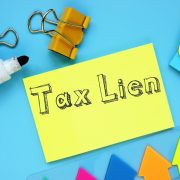Little-Known Facts About Self-Directed IRA Tax Lien Investing
If you’re new to the idea of Tax Lien investing, the concept of keeping such assets within a retirement account might sound especially foreign to you. This post is aimed at changing all that. While many people assume that Tax Lien investing is something that only very sophisticated and well-funded investors can do, it can be more common than you think. But before you make any moves, it’s always a good idea to do your research and understand what it is you’re getting into. Here are some little-known facts about Self-Directed IRA Tax Lien investing to help ensure you aren’t caught by surprise if this is indeed the course of action you choose for yourself.
The Benefits of Tax Lien Investing
Before we talk about some of the little-known facts, we should probably brush up on the basics, especially when it comes to the benefits. As you can see on our Tax Lien Investing page, we point out some of the specific benefits to investing in this kind of arrangement, but are also careful to point out that it may differ from state to state.
There, we point out that there are some key benefits to Tax Lien investing that investors will want to be aware of:
- The ability to collect higher than normal interest rates. This can be especially enticing in such a low interest rate environment, which has been the case in the United States for some years now.
- Investors can potentially foreclose on the property. If someone who owes on the Tax Lien fails to make payment, in many states, the investors can then become the owner of the property when they foreclose on the lien. Make sure you check your state’s individual rules to get a better sense of whether this might be something for you.
It’s Still a Good Idea to Work with Professionals
In the world of Self-Directed IRAs, a lot of people like to talk about the level of independence that people can achieve when they choose their own investments. This sometimes leads investors to believe that they don’t need anyone in their corner. That’s not the case. When taking on investments like Tax Liens, it only makes sense to consult with real estate and accounting experts to ensure that everything is in line. Investors also frequently work with realtors and/or appraisers to assess the value of a property, and that’s all before even bidding on the Tax Lien itself.
Understanding the Process of Foreclosure
When many people read about Tax Liens, they may only get so far before they learn that in the case of foreclosure on the lien, the investor may be able to decide whether to sell the property for a profit or hold the property to enjoy the income that may come from the rent collected. If this is the case, the investor may end up using the Tax Lien eventually as a piece of real estate within a retirement portfolio.
What are the Next Steps?
Many investors who seek unique and interesting ways to invest are usually intrigued by Tax Lien investing. It can sound complicated. But when investors dig into the nitty-gritty details, they may also find themselves intrigued by the possibilities. With enough good-quality research, an investor can identify opportunities for investing that they otherwise wouldn’t be able to seek out. And with the protection of a Self-Directed IRA, investors can often do more with their retirement money than they initially imagined.
Interested in learning more about Self-Directed IRAs? Contact American IRA, LLC at 866-7500-IRA (472) for a free consultation. Download our free guides or visit us online at www.AmericanIRA.com.





